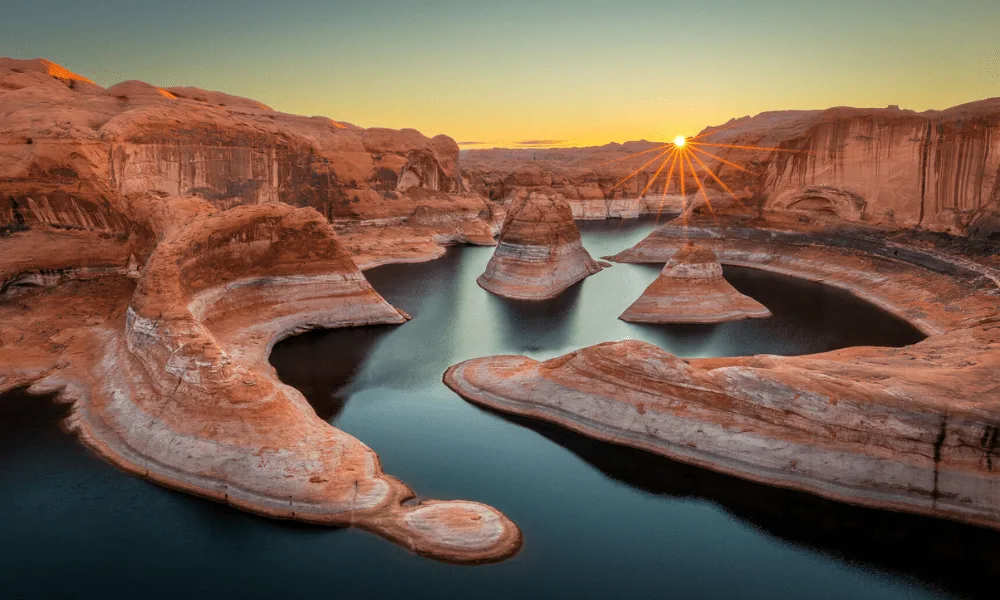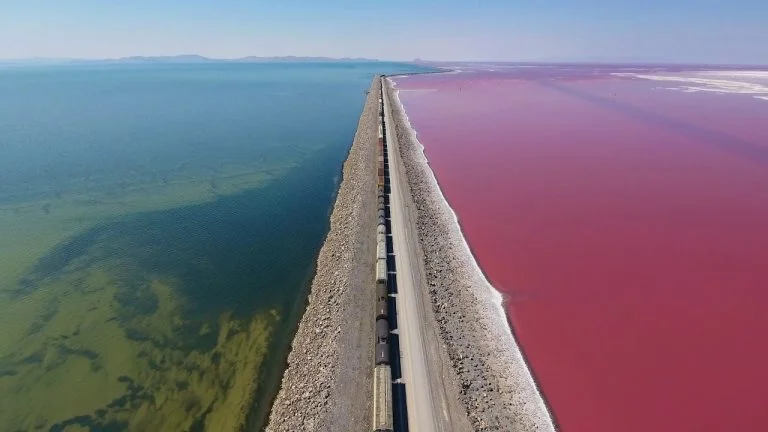Lake Powell Water Levels after Stroms and All New Things You Should Know About Lake Powell
Lake Powell is situated on the Utah-Arizona border and has significant geographical and historical value. Born from the waters of the Colorado River, this man-made reservoir stands as a testament to human ingenuity and nature’s splendor. Tourists flock to Lake Powell, captivated by its pristine waters, winding canyons, and panoramic beauty, making it a premier destination for relaxation and adventure. After the huge stormy season, people are wondering about the impact of the storms on the lake. So let’s see did climate change make any difference?
The Current State of Lake Powell
Recent drought conditions affecting the lake
- Despite unexpected rain showers from Hurricane Hilary, which transformed portions of Death Valley into temporary lakes, Lake Powell remains unaffected. According to the U.S. Bureau of Reclamation, the reservoir’s elevation has slightly declined. Data reveals that from a mid-April height of 3,520 feet, Lake Powell peaked at 3,584 feet in early July, only to decrease to 3,575 feet by late August. This puts both Lake Powell and its neighboring Lake Mead at disturbingly low historical levels.
- Although Utah experienced a stormy August, there was a possibility of further rainfall. And thunderstorms in Colorado and Utah due to the remnants of Tropical Storm Harold. According to news sources, neither Hillary nor Strom Harold increased the lake’s water level.
Federal projections on water levels
- By the end of August, Lake Mead was expected to see a foot rise from the previously predicted levels.
- Presently, Lake Powell stands at a concerning 37.4% fullness, having dropped around 7 feet this year. Considering the Colorado River’s dwindling supply, the U.S. Department of Interior is meticulously planning the future management of reservoirs like Lake Powell and Lake Mead. With public comments on the department’s environmental impact statement for post-2026 operations due soon, the idea of draining Lake Powell and restoring Glen Canyon is gaining traction.

How was it created?
Lake Powell was born from the construction of the Glen Canyon Dam in the 1960s. This artificial reservoir was created by damming the mighty Colorado River, forever changing the landscape and serving multiple purposes, from recreation to water storage.
Things to do in Lake Powell
Lake Powell offers visitors a plethora of activities. Boating, a favorite among many, offers a chance to explore the lake’s many canyons and inlets. For the more adventurous, kayaking allows a closer, more intimate interaction with the lake’s serene beauty.

Interesting Facts about Lake Powell
- Largest Water Reservoir in the Southwest
Lake Powell, the largest water reservoir in the Southwestern United States, covers about 1.25 million acres and has nearly 2000 miles of shoreline. It’s an impressive sight, with a depth of over 500 feet in some places and a surface area of more than 10,000 square miles.
- Formation and Glen Canyon Dam
The Glen Canyon Dam, completed in 1963, created the reservoir to store water for three states. It’s the second-tallest dam in the US at 710 feet. The lake generates electricity and irrigation water for the Colorado Plateau area.
- Recreational Paradise
Lake Powell is a popular hub for recreational activities like boating, camping, fishing, kayaking, and exploring beautiful canyons. It’s home to the world’s longest stretch of non-stop boating, taking about four days to complete a round trip from the main channel to the farthest end of its tributary canyons.

Conclusion
Lake Powell stands not just as a marvel of nature and human achievement but as a poignant reminder of the delicate balance between both. To ensure that future generations continue to revel in its splendor, collective efforts towards sustainable water management and conservation are imperative. Let’s pledge to protect and preserve this gem for future generations.
Also read:







